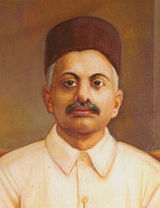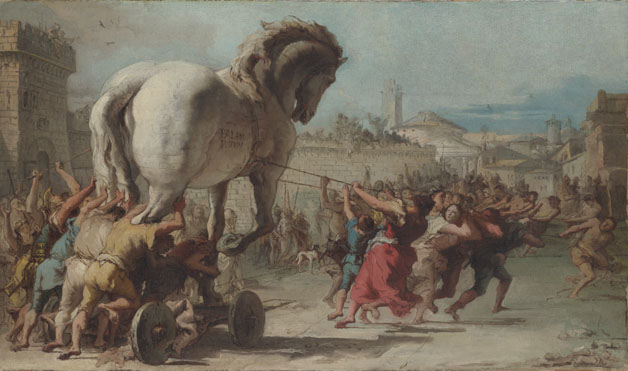It is often the
case that when speaking about caste-related problems one is accused of being
casteist. This is also true in Goa,
where any discussion about the realities of caste power evokes accusations of
being motivated by a personal dislike for brahmin groups, or of constantly
“targetting” brahmins, especially—so the argument goes—given that the Saraswats
are but a minority community; so any polemical attack on them amounts to
casteism or communalism.
But it is not casteism
to speak about the violence of unequal power relations engendered by the
presence of the caste system and the identities of caste. Rather, the
conspiracy of silence around unequal power relations and the dominance of a
single group, or a couple of groups, through caste privilege is what
constitutes casteism. There is generally a deep silence about the violence of
caste, and casteism operates when those who seek to speak about this violence,
and challenge it, are accused of being casteist.
 Let us be clear
that in Goa, the Saraswats may be a small community, but they are a powerful
community who hold much social, cultural and economic capital, and whether
consciously or unconsciously, they wield power to ensure their continued
hegemony. They fulfill the sociological category of “the dominant caste”
constructed by the famous sociologist M. N. Srinivas. To expose the manner in
which this power is wielded is not, to my eyes casteism.
Let us be clear
that in Goa, the Saraswats may be a small community, but they are a powerful
community who hold much social, cultural and economic capital, and whether
consciously or unconsciously, they wield power to ensure their continued
hegemony. They fulfill the sociological category of “the dominant caste”
constructed by the famous sociologist M. N. Srinivas. To expose the manner in
which this power is wielded is not, to my eyes casteism.
There are often
suggestions, that “to be proud of one’s origins is not casteism”. Rather,
casteism is when one “belittle[s] the origins of others”. This is an ingenious
strategy beloved of many supporters of the caste system. These proponents of the caste system fail to
recognise that any identity of the self is invariably linked to identities of
others. Thus, one can be brahmin only because others are not. Further, as a
result of the operation of history, the brahmin identity is not an innocent
identity. It is invariably the identity of oppressors. This is more so the case
in Goa, where groups that claim a Saraswat identity, whether Catholic or Hindu,
have controlled property, people tied to those properties, and attempted to
control the rest of society too. There is not the space here to demonstrate fully
how the assertion of a brahmin identity in Goa is invariably at the cost of
demeaning a non-brahmin one, but any honest look at our society and history
will bear this out.
It needs to be stated clearly, however, that the problem in Goa is not just with brahmins alone. There are other upper-caste groups, like the Chardos and the Desais, who despite their limited size similarly exert power owing to the manner in which they not just control landed property, but enjoy social privilege. Indeed, as the case of the Konkani Bhasha Mandal (KBM) will demonstrate, it is possible for Chardos to operate with the brahmanical matrix that the KBM embodies. As friend once commented, “for the Chardos, to be anti-brahmin is to be anti-caste”. What they all too often ignore is that they are a part of the problem, along with the brahmins.
 It is this
limited anti-brahmin agenda, instead of an agenda of anti-brahmanism that has
ensured that the bahujan movement in Goa has missed a historical opportunity to
forge a democratic polity. Instead, they have slipped into Hindu nationalism,
precisely because the brahmanical logic of Indian nationalism have not been
challenged. Take the constitution of the Bharatiya Bhasha Surkasha Manch (BBSM),
which includes not just brahmins like Bhembre, but leaders of the bahujan
castes, like Shashikala Kakodkar and Vishnu Wagh. Once again though, it is
impossible to have Brahmanism, without the body of the brahmin, and it is
precisely through the presence of brahmins in the BBSM that it gathers its
symbolic strength. This is so because historically, it has been dominant caste
groups, and especially brahmins that have set themselves up as arbiters of
style and standard.
It is this
limited anti-brahmin agenda, instead of an agenda of anti-brahmanism that has
ensured that the bahujan movement in Goa has missed a historical opportunity to
forge a democratic polity. Instead, they have slipped into Hindu nationalism,
precisely because the brahmanical logic of Indian nationalism have not been
challenged. Take the constitution of the Bharatiya Bhasha Surkasha Manch (BBSM),
which includes not just brahmins like Bhembre, but leaders of the bahujan
castes, like Shashikala Kakodkar and Vishnu Wagh. Once again though, it is
impossible to have Brahmanism, without the body of the brahmin, and it is
precisely through the presence of brahmins in the BBSM that it gathers its
symbolic strength. This is so because historically, it has been dominant caste
groups, and especially brahmins that have set themselves up as arbiters of
style and standard. The power that Bhembre, Bhatikar, and other brahmins, Hindu or otherwise, claim to determine “standard”, whether of Konkani or otherwise, flow from the way in which upper caste individuals asserted their claim over languages in the late nineteenth century. In this context I would like to refer attention to the work of Veena Naregal in Language, Politics, Elites and the Public Sphere (2001) where she points out that
“By the later decades of the nineteenth century, drawing on philological beliefs about the essentially interrelated genealogy of the Indian vernaculars and their common descent from the immaculate purity of the great and ancient Sanskrit language, English-educated individuals in different parts of the subcontinent could claim to constitute a transregional kinship with an immaculate high' cultural pedigree. An important part of this elite self-image was their shared status as custodians of 'correct' cultural practices. Thus, when giving the Wilson philological lectures in 1877, claiming descent from the noble brahmins of the 'ancient aryavarta' was, for the well-known orientalist scholar Bhandarkar, clearly, a way of enlarging through their dominance over the regional vernacular spheres”(p. 48).
It has been suggested that Uday Bhembre and Arvind Bhatikar are ‘good’ persons who have
“the highest respect” for the Christian community in Goa. If they do, they have
a very strange way of showing it, given that they have been suggesting Goan
Catholics are anti-national merely for asserting their right to educate their
children in the same English language that Bhembre and Bhatikar’s families are
being educated. One wonders if these good persons have directed similarly
vituperative language at the members of their own families. In any case, the
assertion of the patriarchal right to dictate to other local communities is
very much a part of brahmanical arrogance. An ideal way to show respect for the
Christians in Goa would be for Bhatikar and Bhembre to cease their frightening
hate-speech and support the right of these communities to determine the path of
their own future.
(A version of this post was first published in the O Heraldo on 18 Sept 2015)







